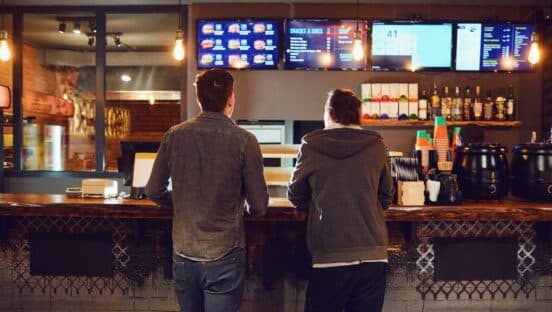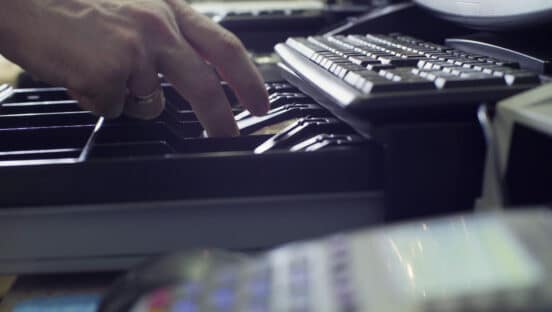While social distancing, masks, and restaurant closures will likely remain some of the most prominent memories of how the restaurant industry changed amid the COVID-19 pandemic, the long-term legacy of 2020 will be a major shift in consumer habits. Though the drive thru was already a major sales driver for many brands and takeout and ghost kitchens were already on the rise, the pandemic changed the way consumers interacted with brands almost overnight, catapulting these growing channels into prominence.
In only eight months, customers have built drive-thru and pickup orders into their routines, and restaurants have quickly shifted their service models to match. Brands have not only adapted their menus and cooking procedures to ensure food holds up in transit and shifted team members to better serve guests, but they have also begun adapting their floor plans in preparation for the future of off-premises dining.
“Mobile ordering for pickup was already growing, but COVID catapulted that growth trajectory by over 200 percent this year, according to Rakuten Intelligence,” says Jaron Waldman, co-founder and CEO of Rakuten Ready. “Having seamless operations established enables contactless fulfillment, which means faster and safer experiences for customers and employees. We predict these expectations will continue even after COVID-19, as people will now expect precautions and time efficiencies to stay in place.”
Now, major brands are piloting smaller footprints and more digitally-centric restaurants to meet growing consumer demand for mobile ordering and convenient pickup options. For example, Taco Bell announced it will open a “Go Mobile” store with a pickup-only drive-thru lane in Q1 of 2021 for customers ordering through the brand’s app. Meanwhile, McDonald’s has also announced that it will focus on reaching customers through digital channels in 2021 by ensuring stores have dedicated parking for pickup orders, as well as by piloting an express drive-thru lane for customers who order ahead with the app. Even fast-casual brand Shake Shack, which traditionally has not operated drive thrus, is launching a digitally enabled drive-up “Shack Track” pickup windows and curbside pickup.
This format proliferation is an attempt by brands to be customer centric—to put diners’ evolving needs first. However, format is only one part of the customer centricity equation. While restaurants must meet guests where they are now and where they will be in the coming year, customers will still demand the same high-quality food and service they’ve always expected from restaurants.
“A key indicator in determining brands success in navigating these format tests is their ability to bridge the online to offline experience for customers and building a solution that doesn’t just work for the operators, but complements and supports customer behaviors and expectations,” Waldman says.
More mobile orders and off-premises dining adds more complexity to operations, making timing more essential than ever. As more orders are placed before customers arrive at restaurants, brands run the risk of disappointing guests with cold food that’s prepared too early or slow service for orders prepared too late—mistakes which can hurt the brand’s reputation.
Yet just as the rise of mobile technology in the quick-service space introduced these new challenges, it can solve them, too, through geolocation software, which can alert team members when customers are approaching so orders can be prepared at exactly the right time. While geolocation has grown in the industry in the past few years, more brands will begin embracing the technology in 2021 as they pivot to more mobile-first dining options.
Though some brands have delayed using geolocation software in the past because leaders assumed it was difficult to setup or too expensive for smaller brands, providers are making geolocation technology more accessible than ever, such as Rakuten Ready’s new lighter-weight version of ARRIVE—launching in January—which is self-service and can be set up in a day.
This new offering, ARRIVE Essential, will contain all the necessary components to support curbside and in-store pickup: consolidating orders into one view, two-way customer communications, arrival notifications, and, most importantly, simplicity that requires little training.
Despite the rapid shift to mobile-first service and off-premises dining, this proliferation of new restaurant formats has proven that the foodservice industry and its leaders are resilient. While questions remain about what the future of quick service will look like, restaurants can prepare by embracing these shifts and the technology that will make their brands successful.
To learn more about ARRIVE Essential—launching in January—visit the Rakuten Ready website.
By Peggy Carouthers













